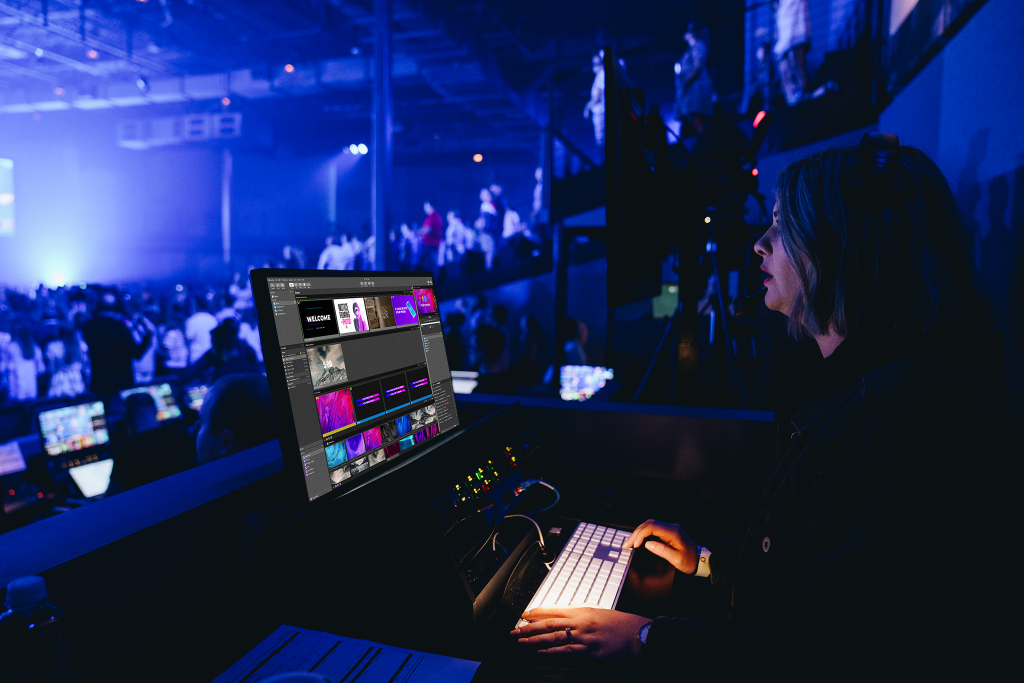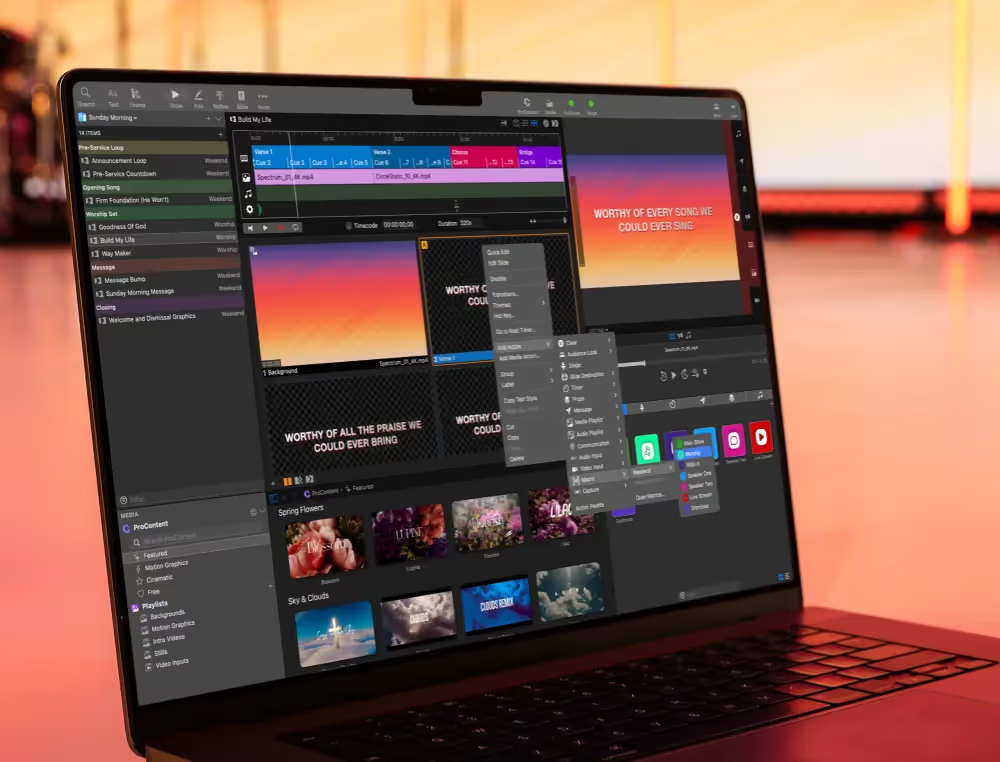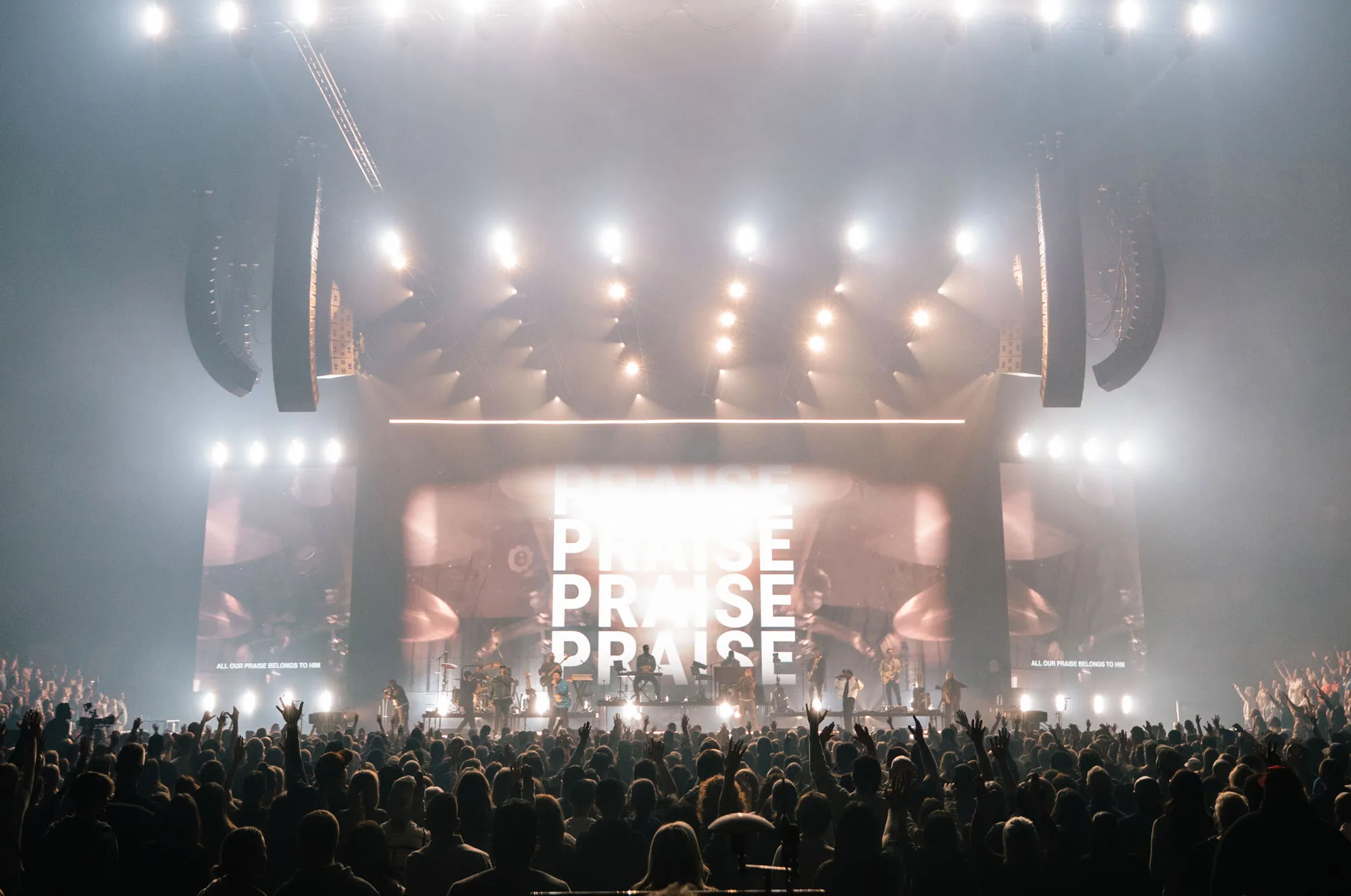Learn more Introducing the ProPresenter Lyric Banner!
If you weren’t already live streaming your services before the pandemic, chances are, you started doing so at some point in 2020. Even if your “live stream” consisted of a pastor speaking on an iPhone on a tripod, that still counts!
But now the time has come to upgrade to a more professional live streaming setup for worship services, and this software market is tricky to navigate.
Tips for Choosing Live Streaming Solutions for Churches

If you have questions about how to choose the best live streaming solutions for churches like yours, check out our quick guide below.
Understand the Components of a Church Live Stream
The first step in choosing one of the best live streaming software for churches is understanding exactly what goes into a live stream.
This matters even more for churches because you’re never starting from scratch (like a vlogger or Twitch streamer might). You have existing tech infrastructure to support your in-person services (as well as ongoing tech needs there), and your live stream setup has to work well with those elements without disrupting them.
So let’s walk through the components of a live stream — keeping in mind how they might interact or overlap with things you’re already doing.
Audio and Video Inputs

Your live stream starts with both audio and video inputs. Usually, these involve systems already in place for live production, though you might need additional video recording capability if you weren’t doing live (camera) video previously.
Frequently, a live stream setup pulls an audio feed from the soundboard, either as an output of the primary feed or from an auxiliary bus. Video could come straight from a camera, or, in multicamera setups, may come from another device that handles the video switching.
The specifics can vary here, but in any setup, these inputs must feed into the computer that will produce the live stream.
Stream Design
Once the inputs reach your PC (or Mac), stream design is next. Anything that isn’t the raw video: overlays, presentation slide placement, and any other elements that make your stream look like more than the result of pointing a live video camera at the stage.
The complicating thing here for churches is that you’re already producing presentation content (lyrics, videos, announcements, sermon notes). You’ll need to figure out how to implement that with video for streaming, which can introduce another piece of software or another split feed.
Encoding
Next up is encoding, the process of turning full-quality video into something that can be uploaded and still look good. Hardware encoding uses an external piece of hardware (often in the Blackmagic family), while software encoding happens on the PC powering the stream. The latter is less complicated but requires a more powerful computer (and the right video encoder software — more on that in a bit).
Encoding doesn’t pose any unique challenges in a church context.
Uploading / Streaming
The only thing left is to pick a streaming service (or platform or host) and start the stream. We won’t get into how to choose a live streaming solution for hosting other than to say this: social media streaming on Facebook Live and good ol’ YouTube are two widely available options, and there are numerous more specialized platforms designed for live streaming churches, too.
Two church-specific considerations here: one, some of the big, general streaming platforms haven’t handled legal use of copyrighted songs, kicking some churches off seemingly at random (or muting portions of the stream). This is all automated technology attempting to stop piracy, but it can be a big disruption for churches—even when they’re doing everything right and paying for the right licenses.
Two, you might need to evaluate your internet speed. Uploading a live stream is bandwidth-intensive, and on the upload side rather than the download. Low upload speeds are a common cause of poor stream quality or inconsistent video.
Features You Need in Your Church Live Stream Solutions

Understanding the components of live streaming is the first step toward creating high-quality streams of your worship services. Next up is figuring out what kind of live streaming software makes the most sense for your context and existing setup.
You’ll find a handful of solutions out there, including some with a free trial or free basic plan (we’re looking at you, StreamLabs). But church live streaming solutions may need to do a little bit more than basic stuff.
Make sure that the software you choose for streaming your Sunday services can deliver all the following elements.
Reliable Software Experience
First up, if you’re going to stream your church service at all, you want a reliable experience, one that runs smoothly and never crashes or freezes. You don’t want your stream just inexplicably going dark: this is important, meaningful content!
Also, if you do end up having trouble, you’ll need to rely on quality customer support or technical support. The best solutions offer this, while free or freemium options typically don’t.
Consistent High-Quality Output
Along the same lines, you need a real-time video output that maintains consistent high quality at all times. External factors like low internet speeds, camera quality, or broader internet outages also influence this, and these may be outside your control. Still, be sure that the software you choose for your house of worship isn’t the weak link resulting in variable (or always poor!) quality.
Professional-Grade Software Encoder
We mentioned video encoding earlier, and we’re bringing it up here again because not every live streaming solution includes a professional-grade software encoder. Some applications require to use another piece of software to do this, or to use a hardware encoder.
But some of the best church live streaming solutions handle the software encoding, too—and do a solid, reliable, professional-grade job with it, too. ProPresenter is in this category: with ProPresenter, the software encoder is built in.
Works with a Wide Range of Hardware
Because you’re working within an existing AV setup for live services, you’re a little locked into your existing hardware configuration. And if that’s the case, you need a solution that’s flexible enough to handle the hardware you’re using.
Gives You Powerful Stream Design Capabilities
Stream design is another software-powered component you’ll need to figure out. Pretty much all livestream solutions give you some stream design control, but you may need to do more. Look for a solution with the tools and features you need to customize your presentations and your video outputs into whatever sort of stream design makes sense for you.
Can Handle Your In-Person Presentation Needs, Too
Along those lines, you’re already doing plenty of in-person presentations. Wouldn’t it be ideal to use a single app for those live, video, or slide-based presentations and your live stream?
We thought so, so we built this powerful combination of capabilities into ProPresenter.
ProPresenter: The Ideal Choice in Church Live Streaming Solutions

ProPresenter is the ideal solution because it combines so many powerful capabilities into one platform. With ProPresenter, you can design and run presentations during services, including splitting out multiple unique feeds to different screens or locations. And you can run your entire live stream directly from ProPresenter, eliminating all sorts of extra steps, processes, and tools that add complexity to your AV setup.

See ProPresenter’s streaming capabilities for yourself today: download now and start your two-week free trial!
By subscribing, you agree to our Terms and Conditions.
Experience the power of ProPresenter
Take your production to the next level with ProPresenter's intuitive suite of tools.

Stay Updated with Our Newsletter
Get the latest news, updates, and exclusive offers delivered straight to your inbox.

Questions?
Browse our FAQs or our Knowledge base that we’ve made to answer your questions. Need additional help? Connect with a support team agent!

.png)
.avif)